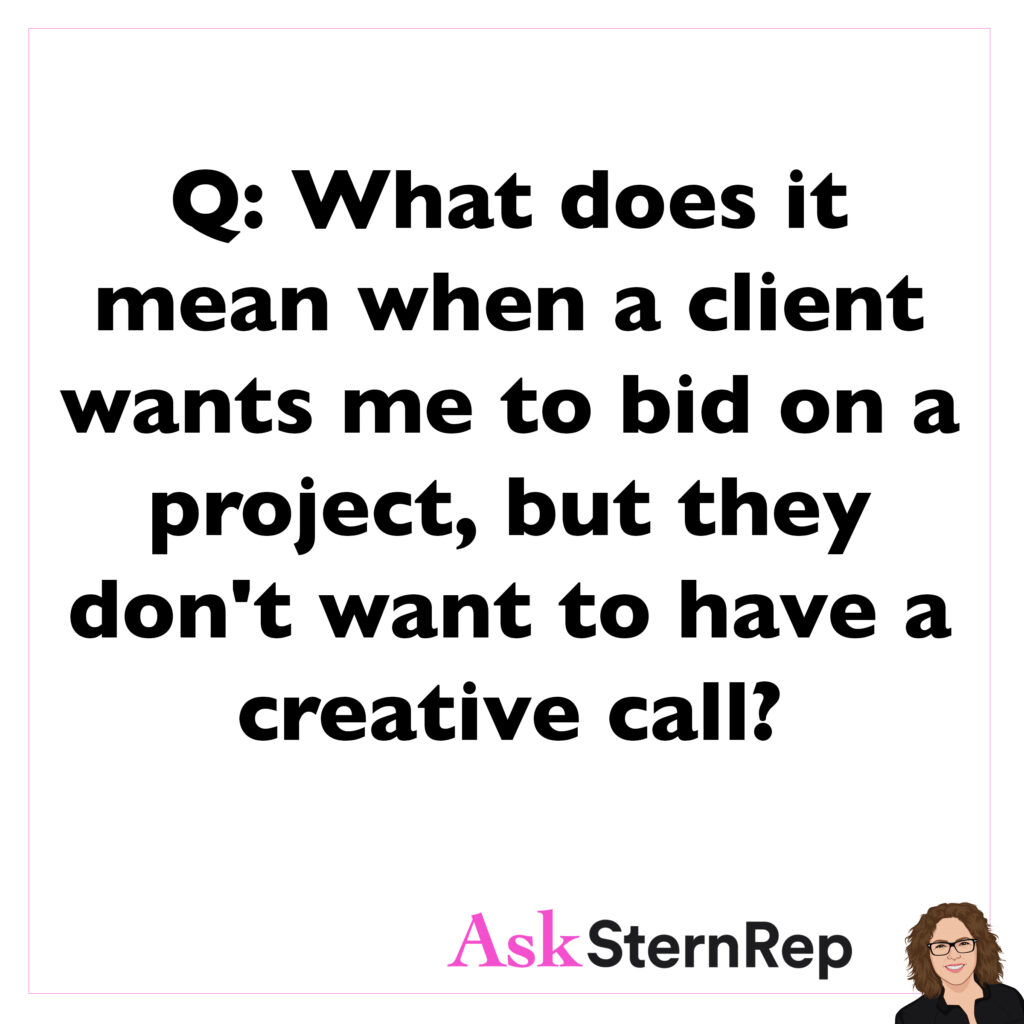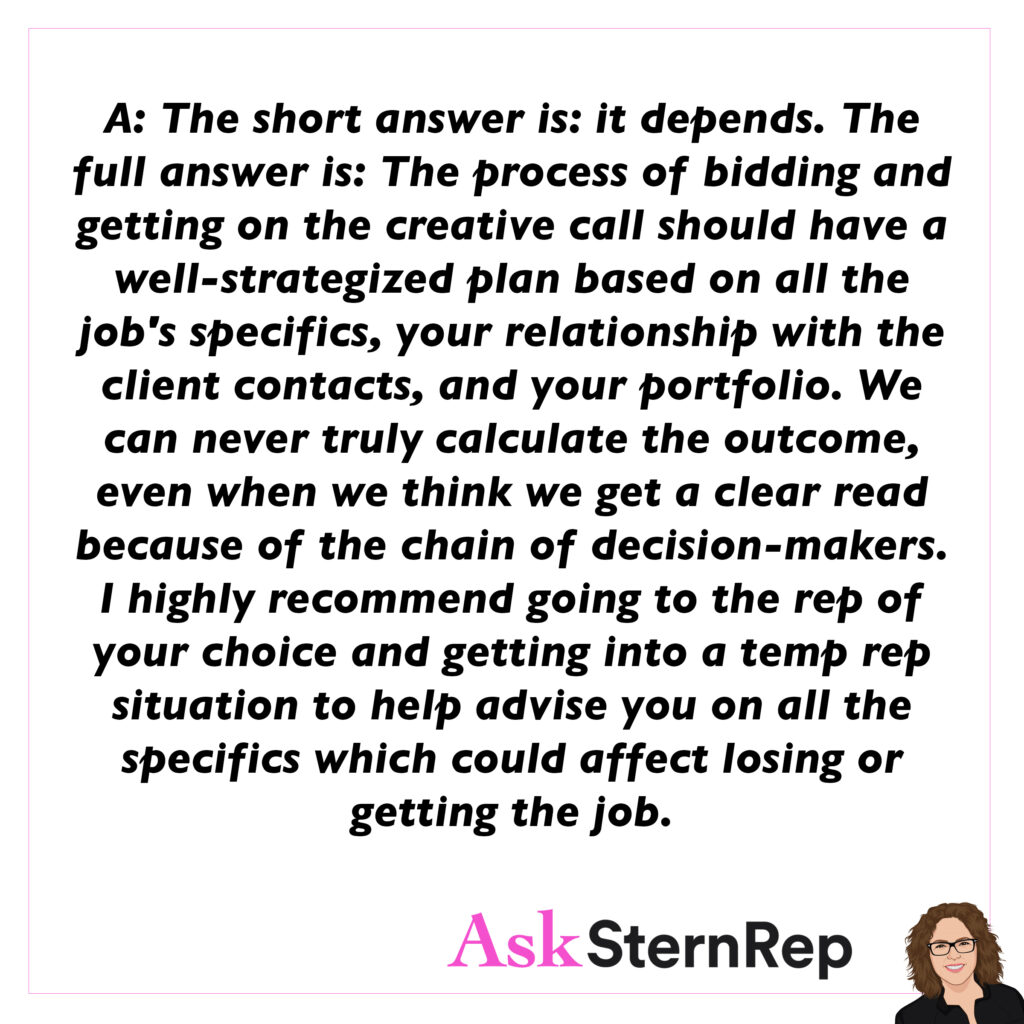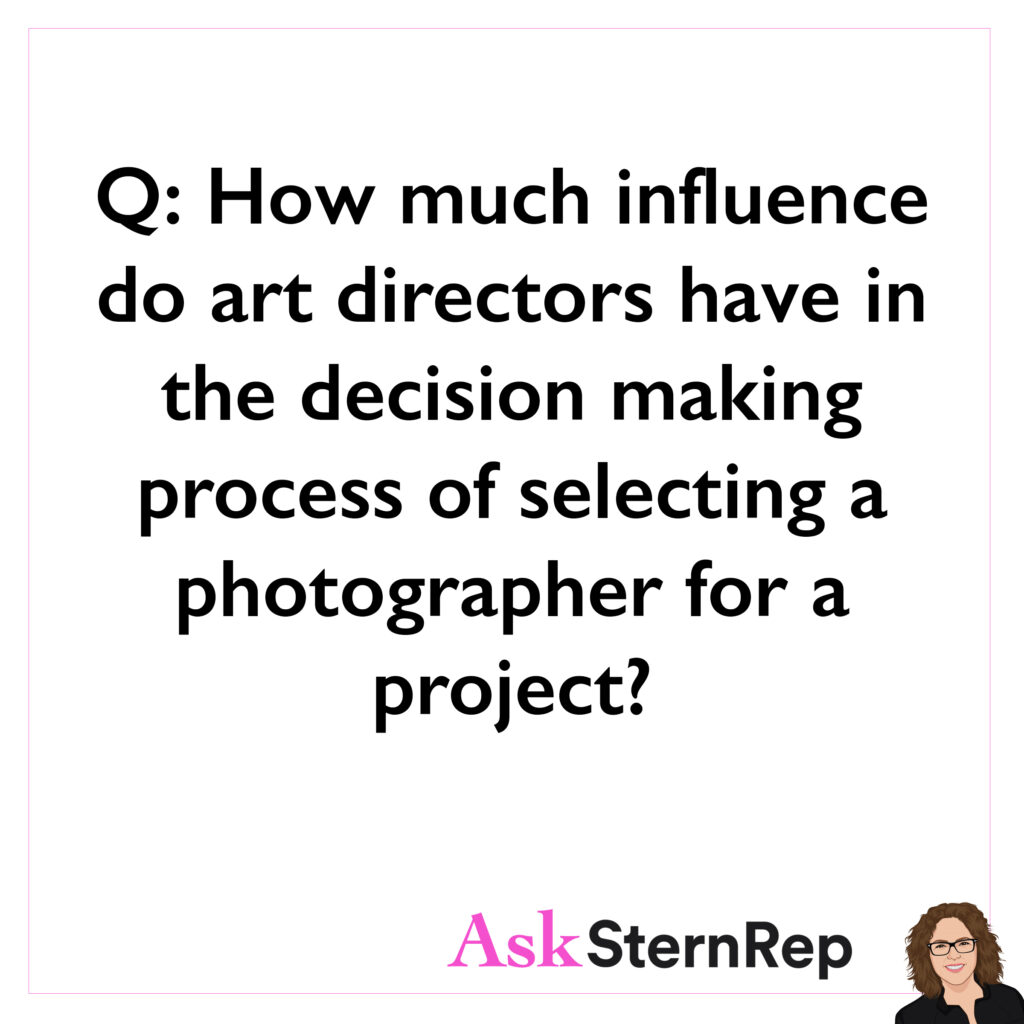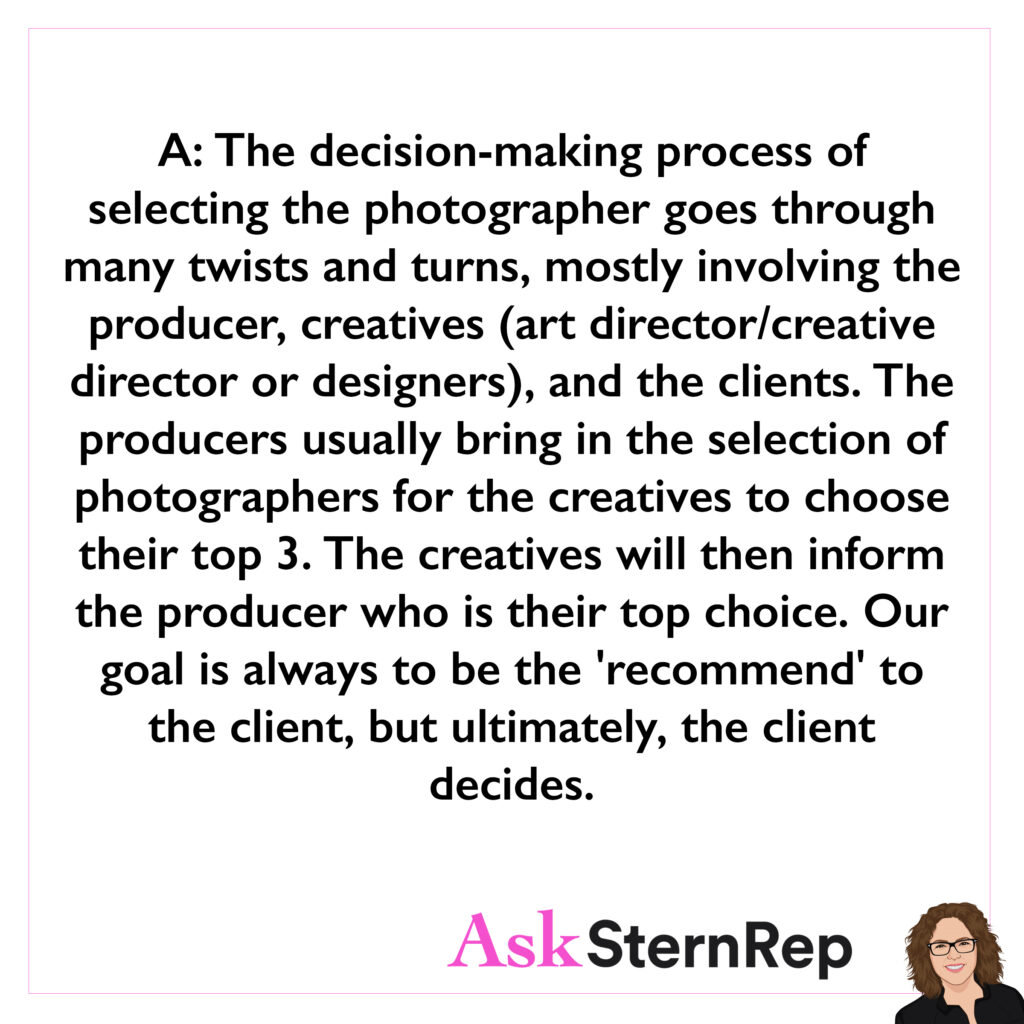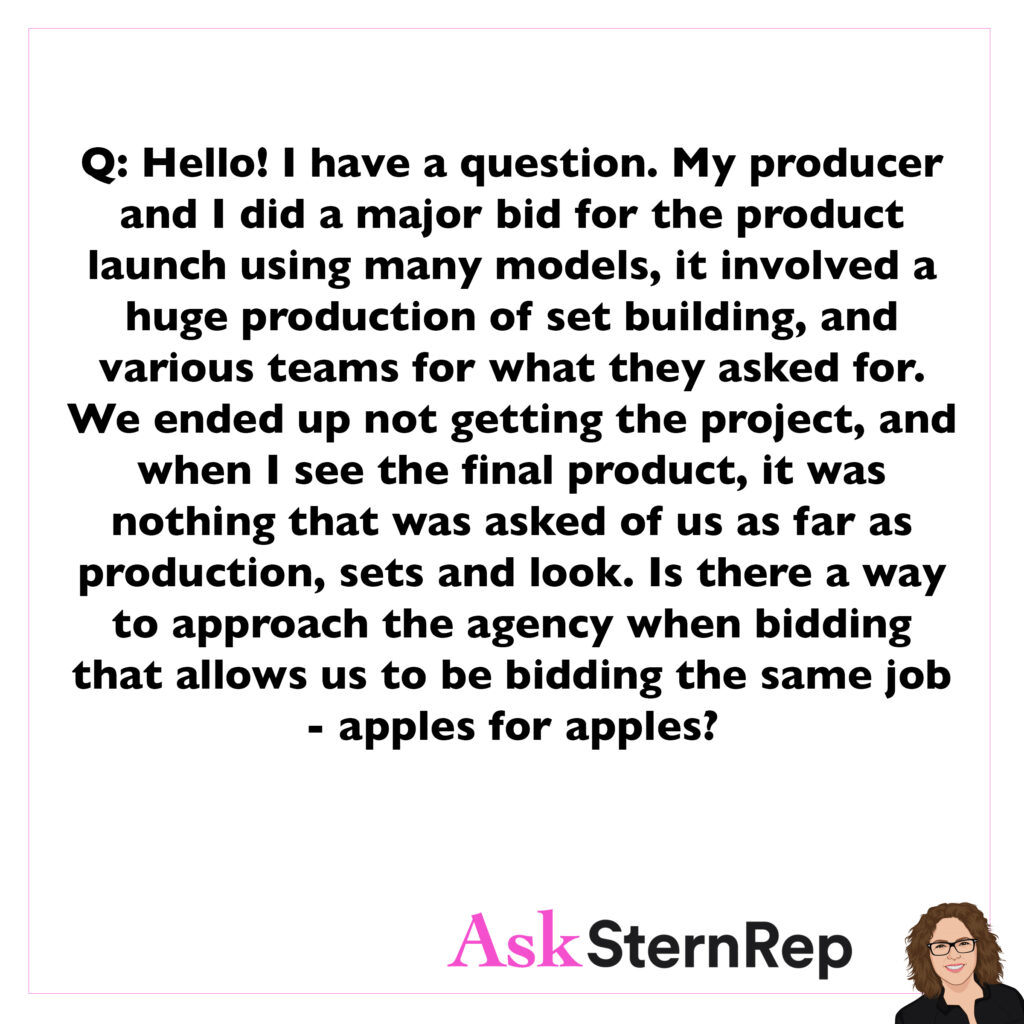We can’t be spending our time doing estimates on information we don’t have.
I’m hearing a ton of complaints from photographers wasting useless time on estimates that don’t turn out to be the real deal. I hear you! With no bid spec sheets, I get many of these requests that won’t reveal the budget upfront, so I focus on the points that help me see if this client is even ready for an estimate. Our goal is to quickly open up the communication doors, giving us a clearer sense of what we are dealing with.
My quick first step estimating questionnaire:
- What is the Usage?
- What is the specific Shotlist?
- Do you have a creative deck with the layouts + mood-boards?
- What are the talent rates?
- Do you have stylists you like to use?
- When is the creative call?

